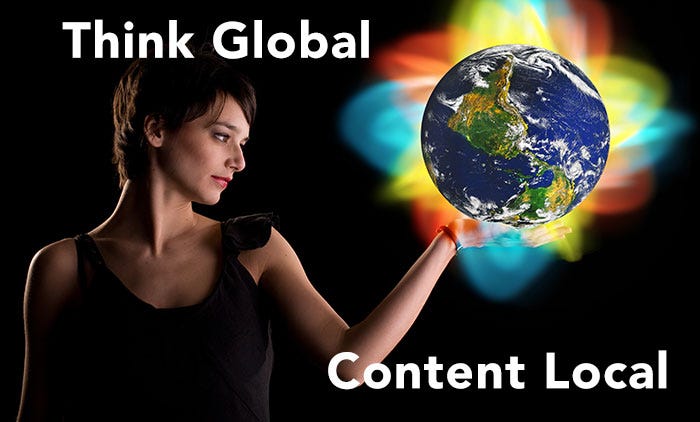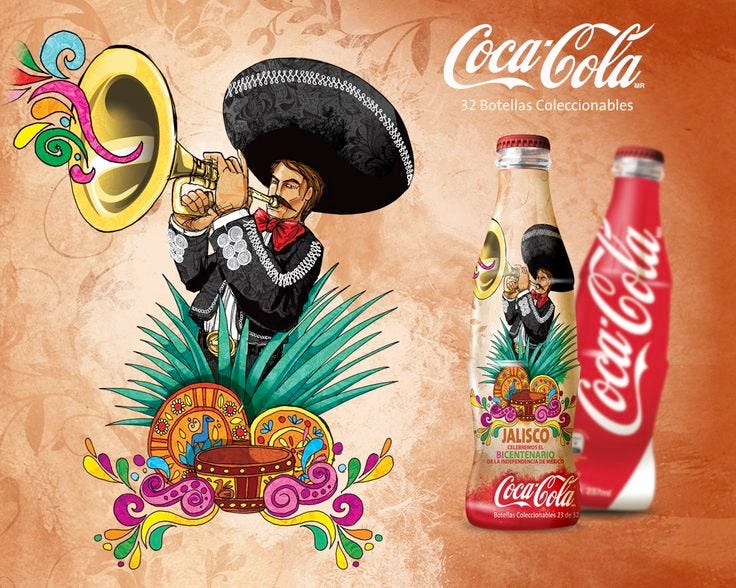Think Global, Content Local: the Key to International Content Marketing Success

Think Global, Content Local: the Key to International Content Marketing Success
It’s the elephant in the room. The internet has enabled a global audience to potentially see your product and service offerings. We are all international businesses now. Supposedly.
But it hasn’t quite worked out that way.
I think we are still struggling to figure out how to have success on the global stage. We believe that the world should be beating a path to our door, and to a certain extent they are — if that world consists only of those who are fluent in English (or at least can read in English) — and you’re really good at what you do.
But is there a specific mindset or methodology that can help us make true progress in international markets using content? I believe there is.
What I want to argue is a concept called “Think Global, Content Local.”
The Coke Playbook

Let’s look at one of the most iconic and successful global brands in history, Coca-Cola, and its implications for content marketers.
To boil down a strategy that is obviously a complex system of interconnected regional offices, hundreds franchisee bottlers and hundreds of local and global marketing campaigns into two simple concepts, we can summarize Coke’s global formula for success as follows:
Think Global, Act Local. Specifically, it can be broken down into two parts:
1. A globally transcendent brand message that appeals to everybody
2. Relentless localization
1. Globally Transcendent Brand Message
What is the one, simple brand message that distinguishes Coke from any other soft drink the world over?
Joy.
In her blog post for the Smartling blog, Shahrzad Warketin says:
Throughout the decades and multitudes of marketing campaigns, Coca-Cola has remained consistent when communicating one strong and effective message: pleasure. Enduring, simple slogans such as “Enjoy” and “Happiness” never go out of style and translate easily across the globe.
Coke’s “Joy” message transcends nations, races and cultures. It’s a universal concept.
2. Relentless Localization
But Warketin points out something else that was key to Coke’s success: allowing their global franchisees substantial flexibility to make Coke a local brand:
Each country’s offerings are customized to its local culture and language, with the most popular names of each region printed on cans and bottles in place of the company’s moniker. This campaign is the perfect example of effectively applying a localized strategy to a global market.
When I used to visit Mexico as a child I remember how ingrained Coke was in Mexican society. Coke was as Mexican as Chile Relleno and Mole Poblano. And that’s because Mexico’s local bottling franchisees did a fantastic job of making Coke a Mexican brand.
Global Yet Local Content
Which brings me around to the Think Global, Content Local approach. The most successful international content marketers today have a consistent message, which translates across cultures and continents, yet create content that is completely appropriate for the local markets in which they transact business.

Exhibit A: Nearshore technology outsourcing powerhouse Softtek, Mexico’s largest technology consulting firm. In fact, they’re the largest Latin American technology-consulting firm. Led by their dynamic CEO Blanca Treviño, Softtek has become an icon in the Nearshore outsourcing industry (in fact they trademarked the term “Near Shore”).
But they’re main content marketing efforts are oriented towards the English-speaking market. In fact their blog has a decidedly American accent. They’re not just blogging in English, they’re speaking in the particular vernacular preferred by their North American corporate clients.
At the same time, they cover topics that are of universal concern to a global audience: IT security, digital transformation, agile methodologies.
Softtek has made a point of addressing universal topics, but appealing to their primary target market, North America, by creating content with a decidedly local voice.
This is harder said than done, but when done right it can reap many rewards.
The Thing Global, Content Local Prerogative
So what does it mean to think global and content local? I believe it takes a two-fold approach:
1. Find your unique, universally appealing mission and voice. There are universal truths about you and your brand that have global appeal, and that you can communicate in your content. Coke’s is Joy, which they communicate through their bottle, their proprietary font, and their joy-oriented content. As a B2B brand, you too must identify that mission and voice that distinguishes both your product and service offerings, as well as the value you communicate through your content.
2. Create content locally. But if you want to truly have success in an international market, then you’ve got to create content locally — or as close to locally as possible. Recently a South American retailer contacted me because they were looking for a pan-Latin American content marketing agency to help them with their efforts throughout the region. But the person I spoke with emphasized something very important: the content has to be local to each country or region. He said that what flies in Colombia won’t fly in Chile, and what works in Argentina won’t be the same as what resonates in Mexico.
Google Translate will not do the job for you. A generic Spanish content effort (or English if you’re hoping to enter markets such as the UK, Canada, US, India) won’t work.
And it’s not just language differences — it’s holidays, slang, the school year, work schedules, local pop culture, the local media landscape, the social media networks that are popular in one country vs. the other.
For example, did you know that in Mexico you’re not going to make it big this year if you focus on SnapChat, despite the fact that Gary Vaynerchuk is so bullish on it? That’s because data usage costs are exorbitantly high in Mexico due to the almost total monopolistic hold Teléfonos de México has on the local telecom market.
Yet for applications like Facebook and Instagram data is free, thus making these the default favorite services of Mexico’s youth.
I just discovered that.
My suggestion, adopt the “Think Global, Content Local” mindset and put it into practice.
In future blog posts I’ll get into specific strategies and tactics as to how to make this work for you.
PS. By the way, you can read about how I got my first international client while blogging in Spanish.
Original article published here: Medium.com










